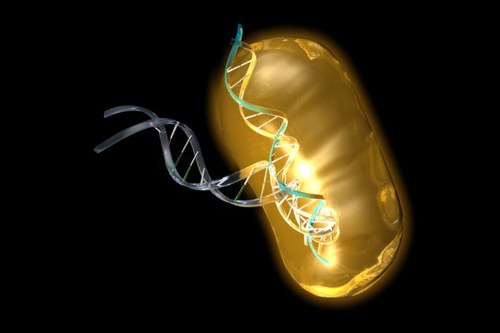A mutation is a persistent transformation of a genotype that occurs under the influence of an external or internal environment. The terminology was proposed by Hugo de Vries. The process by which this change occurs is called mutagenesis.
Further in the article, we will examine in more detail the nature of this transformation, we will also find out what somatic mutation is.
Terminology
Somatic mutation is a modification of a gene in certain cells during the individual development of an organism. Previously, it was believed that genotype transformation usually occurs predominantly before formation or in mature germ cells and necessarily at the embryonic level. This is precisely the reason that gametic changes are recreated by all cells that are formed during the development of the zygote. And she appeared with the participation of the initial mutational gamete. Today, many facts indicate the occurrence of modifications of the genotype at any time of the individual development of the organism.
Plant changes
Science has long proved that somatic mutation is quite common in plants. An example is the kidney variation, which was described in detail by C. Darwin. Such changes most often occur in fruit trees and ornamental plants and are used to breed their new varieties. Different types of apples, oranges and other various fruits were obtained due to the discovery by a person of certain branches that were different from the whole tree. This may be the speed of ripening, and the size, and shape, and the number of fruits.

Using vegetative processes from such branches, you can get trees with identical features of the maternal part. It is believed that they received their initial origin from transformations of the initial cell at the point of growth. Based on the fact that plants do not have an extremely separate path at the embryonic level, the fact of sexual reproduction during vegetative mutations is confirmed. This is possible in the case when the transformation has penetrated into the subepidermal layer, as
germ cells are formed from it
. As a result, both modified and non-mutated tissues that differ from each other can be found in the same plant.
Transformations in animals
In animals, vegetative propagation does not occur and there is no isolated primordial pathway. Therefore, the concept of "somatic mutation" with respect to them is used extremely rarely. Genetics has been most studied in some forms, and therefore these modifications can be observed. These include Drosophila fly. In a male, for example, some parts of the body or organs that were different in color or shape were found.
Somatic mutations in humans
Modifications occur in diploid cells. Therefore, modification is manifested only in the presence of dominant genes or recessive genes that are in a homozygous state. Somatic mutations in humans directly depend on the time of their occurrence. The sooner gene changes occur in development, the more relevant cells will be affected. In which case somatic mutations can be observed in humans? It is not authentically confirmed. Perhaps this process is due to a change in the color of the iris , cancerous degeneration and others. On the other hand, the development of malignant tumors, for example, is mainly affected by carcinogens, especially the negative of which are radiation and chemicals.
Chromosomal aberration
This definition should be understood as a change in the structure of chromosomes. Somatic mutation also leads to this process. When gene changes occur at an early stage of development, bilateral mosaics may appear. They have one half of the body with dominant signs, and the other with recessive ones. In the case of the sex chromosome, ginandromorphs are formed that have female and male signs in half. Somatic mutation with the complete isolation of the embryonic pathway affects a certain part of germ cells. As a result, this is observed in some offspring in the form of an embryonic transformation. However, this phenomenon is very rare. Basically, such a change in genes is not found in the offspring. As you know, spontaneous somatic mutation is also a rather rare occurrence. According to the results of various experiments, it is amplified by the same factors as the embryonic, namely, X-rays.

Mutability of genes is the cause of many phenomena. In plants, for example, they include variegation, variegation, and also the color change of other parts of the object in question. In humans, as mentioned above, the phenomena and results of somatic mutations are not exactly proven. However, we can assume that these are manifestations of mosaic and asymmetric signs, such as
different eye color, spotting, pigmentation, and others. Currently, the opinion has spread that the consequence of somatic mutations are various kinds of malignant tumors. In addition, they are trying to find a connection with chromosomal aberration. Some believe that the main factor is an increase in the number of chromosomes, while other researchers believe that the reason is their elimination. However, this is just a guess. There is no scientific evidence for this, but
cytological studies have not yet shown anything.